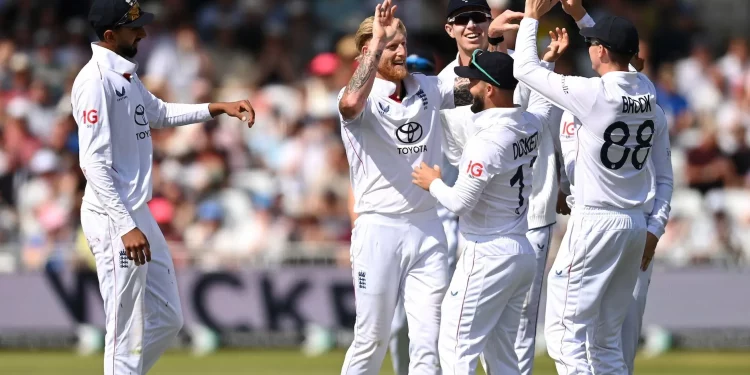After defeating India handily in the first game of the five-match series, England began the second Test. The Shubman Gill-led team appears to be in the lead heading into Edgbaston, having defeated the visiting Indian team by five wickets in the first game at Headingley. In Birmingham, England famously won the toss and requested that India bat first, a move that might have backfired on the hosts.
KL Rahul was dismissed early in the innings by India, but after a superb 87 from Yashasvi Jaiswal and a spectacular 269 from Shubman Gill, Ravindra Jadeja added a stunning 89 to help the team to a final total of 587. Even though India’s pace attack lacked premier pacer Jasprit Bumrah, England had a terrible start.
Bumrah was replaced by Akash Deep, who immediately had an influence on the game and sent the highly effective Ben Duckett back to the pavilion as the English opener left without posing a threat to the score. Akash Deep hit twice in quick succession to give India the lead early in the innings, and Ollie Pope also edged a fullish delivery to Karun Nair on the very next ball. England’s problems worsened when Mohammed Siraj entered the game to bowl the eighth over and interfered with Zak Crawley’s departure.
In the last session of the second day, Harry Brook played several counterattacking strokes as England attempted to steady the ship. Additionally, Joe Root managed his wicket and made sure there were no more disruptions until Stumps. With England already trailing by a massive 510 runs and having scored 77 for the loss of three wickets, it is very feasible that the Indians might force a follow-on for the Three Lions if they can finish things swiftly.
However, what is the number of runs England needs to avoid a follow-on?
Only when the team batting second manages to score at least 200 runs less than the team batting first do follow-ons start. In order to prevent a follow-on from the Indian team, England will need to score a minimum of 387 runs overall in the current second Test. Of these, 77 runs have already been scored, and 310 more are required in order to help them avoid losing an inning.
The two batters at the crease have enough experience to save the team. However, batting is now more challenging than it was on the first two days of the match because the pitch is a few days older. In addition to a strong pace battery, spinners may be used, and India has players like seasoned Ravindra Jadeja and productive Washington Sundar to contribute.
Both teams anticipate that Day 3 will be very important since it will determine the outcome of the match and provide a clue as to whether the game will end in a draw or if either team will be able to pull off a victory in this eagerly awaited match.







